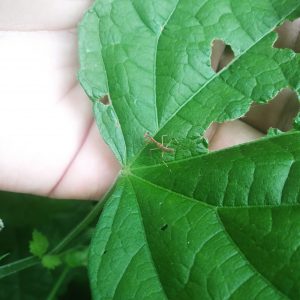Students in 3rd and 4th grades will be learning some amazing facts about insects in our Insect Investigators Summer Class this July! Did you know that summer is a very important time for the life cycle of many insects, especially the praying mantis.

Mantises (order Mantodea), first lay their eggs in autumn, which start to hatch in the spring. Late spring and summer, the nymphs (baby mantises) are in a period of growth and development and they tend to be seen more often because of this. The babies hatch from an egg sac that is produced by the mother mantis using a special secretion from her abdomen. This egg sac is known as the ootheca. Color typically varies, but babies tend to be a different color than the adults. As the nymphs keep growing, they molt their exoskeleton. Depending on the species, some mantises can live from about 4 to 6 months but smaller species average a lifespan of only about 4 to 8 weeks.
When you visit the Science Center, look around the Turk’s cap plants on the outside terrace. Nymphs will tend to be underneath leaves or sitting on stems and they are fairly difficult to find due to their size and great camouflage. Nevertheless, with some patience, it is very possible that you will come across one. In addition, if you have children that would be interested in learning more about mantises and other amazing insects, our Insect Investigators summer class from July 15th to the 19th still has some open spots. Call 817.860.6752, ext. 102 to register or visit our website!
